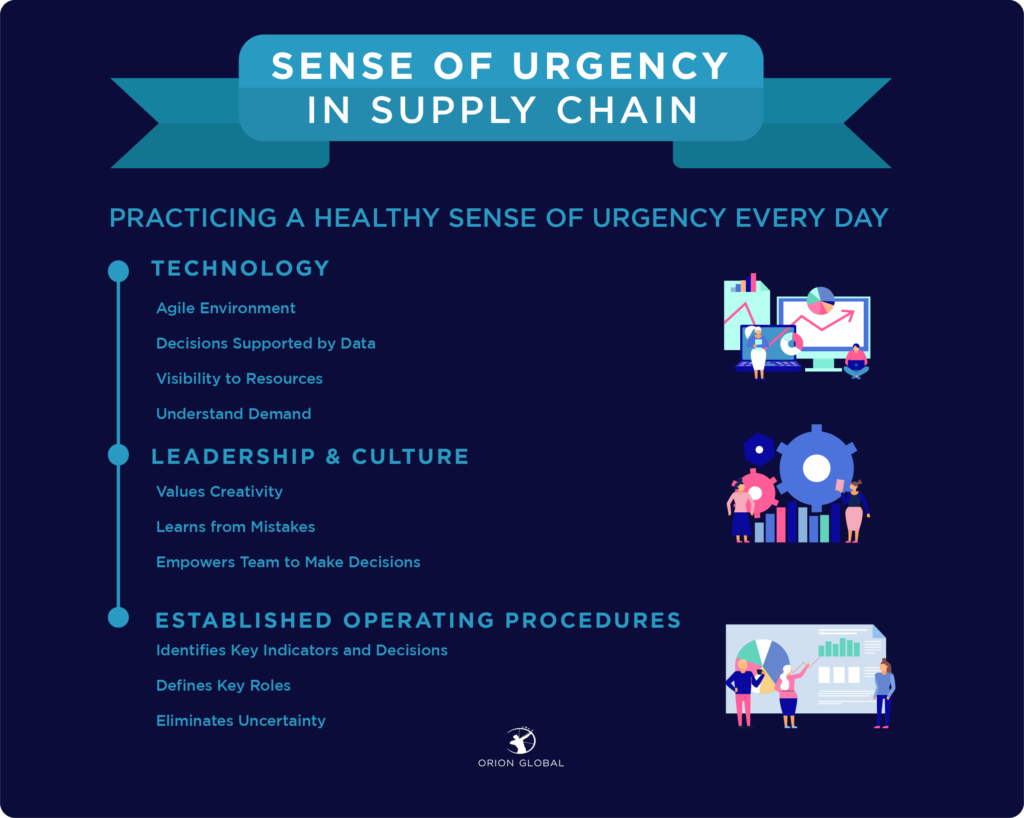What an indescribable time we are living in! I cannot seem to come up with a word to “describe” the Covid-19 environment. For most of us, it’s a time we may never have envisioned we would find ourselves in as a country, a society, or personally. I have had friends describe it as “living in the Twilight Zone”. That is a pretty fair assessment. For those of you who can remember watching this television show, the intro is a good summation:
“There is a 6th Dimension not known to man…Somewhere between the Pit of Men’s fears and the Sunlight of Knowledge.”
This comes about as close to describing where it seems we find ourselves as anything else. We can apply this to our personal lives and the business world, as they are now more intertwined than ever.
Who could ever imagine tissue paper and hand soap would become the most sought-after commodities in the United States?
Supply Chain Disruption
The bulk of my career was spent with one of the largest supply chains in the country. I spent time on the “front lines” figuring out how to get much-needed products to stores and the consumer. Supply Chain disruption is a common occurrence and something you might deal with several times per year. However, the usual disruption is localized vs. global, short-term vs. uncertain, either on the Supply or Demand side. It would have a localized human impact vs. widespread human fear and panic. These challenges generally arise from a natural disaster, civil unrest, plant shutdowns, or labor strikes. They are normally not globally impacting at the same time.
Sense of Urgency vs. a Sense of Emergency
The Covid-19 pandemic has more broadly brought to light the differences in Supply Chains that are reacting with a Sense of Urgency vs. a Sense of Emergency.
Although all may initially react out of a Sense of Emergency, there is a sharp contrast to powerhouse Supply Chains and those not prepared for a long term, uncertain disruption. Why? Because these companies are practicing a healthy sense of urgency every day. Over the past few weeks, we have seen companies pivot and quickly adjust production lines to manufacture other products. Some are now creating masks, ventilators, and other much needed medical equipment. Some recent announcements:
- Walmart stated their Private Fleet had delivered 150k loads to the stores, 30k loads to its distribution centers and driven 27.5 million miles “equivalent to driving from NYC to LA 10k times” during the previous 7 day period.
- McDonald’s is donating 1 million N95 masks to Illinois first responders and attributes being able to do this to “our world-class global supply chain network”.
These are the companies embracing an environment of “getting things done” to serve their customers. How can these powerhouse supply chains accomplish such feats?
A few simple answers would be:
- Technology
- Leadership and culture
- Established process/standard operating procedures (SOP)

Technology
Companies that react with a sense of urgency are accustomed to an agile environment. They rely on data and technology to support decision making within their supply chains. Supply chain capabilities come through visibility to resources and understanding true demand at the right time and the right place.

If the inventory is available, but there is inadequate transportation capacity or other issues that prevent timely delivery, then it is irrelevant. Real-time geographical visibility of your transportation capacity allows swift reallocation or reveals the need for additional procurement. Supply chains with a robust use of EDI, on-board computers, and a TMS system helps create that environment of agility.
Likewise, if a fulfillment facility is impacted by the disruption, quick access to other fulfillment capacity options will reduce or eliminate the end customer’s disruption. Companies who have made a digital transformation within their supply chains are constantly able to reinvent and act with a sense of urgency each day. Adjusting and redirecting is in their DNA before the real emergency strikes.
Leadership and Culture
Without a doubt, these companies live a culture that values creativity, embraces mistakes as steps toward progress, and empowers their teams to make decisions, share ideas, and innovate. If you work in an environment where a committee is required to make every operational decision or roll-out a product, are you going to be prepared to make fast decisions during a crisis like this?

Empowering people to serve their customers is vitally important. This doesn’t mean they won’t collaborate with the appropriate stakeholders. It does mean they will be prepared when there is a crisis to act quickly to ensure service to your customers or recommend appropriate actions that may need to be taken. A deliberate sense of urgency and empowerment are critical components of your company culture. All it takes to be successful in this type of culture is to have educated buy-in from the entire team.
A deep–rooted understanding of an organization’s ultimate goal atop a foundation of core principles and values empowers each member to make the appropriate decisions without hesitation.
Standard Operating Procedures
These companies also have SOPs. Processes are established so time is not wasted with “hair on fire”, uninformed decision making. These companies have made mistakes, created COEs, and practice these processes every day while servicing their customers.

If there is a chain of communication and required approvals in place prior to an emergency, decisions are made swiftly. Time is not wasted pulling unnecessary people into the situation. Engaging non-essential people into decision making leads to pontification and potential paralysis by analysis.
Having a scenario-based “playbook” in advance eliminates uncertainty. These playbooks should identify key data indicators, decision points, and communication plans with direct responsibilities clearly defined for each team member. The goal of an SOP or playbook is to eliminate the uncertainty.
Is the Investment Worth it?
The National Federation of Independent Business (NFIB) found that:
- 76% of small businesses are being profoundly impacted by the coronavirus outbreak.
- 23% of them are experiencing crippling supply chain disruptions.
The challenges businesses face in preparing for a “shock” to the supply chain can be expensive. This can make it difficult to achieve buy-in to spend capital and time for preparation. The human tendency kicks in and convinces us that something this bad could not possibly happen. But, here it is!
The impact of this virus and the near shutdown of the US economy will be far more jolting and longer reaching than any of us can imagine. Those businesses that survive this pandemic will hopefully be ready to embrace the future, learn from experience, and put stop-gaps into place for the inevitable next “Covid-19” global impact. It is sure to come.
It does not require a network of thousands of private fleet drivers, many distribution centers, and hundreds of thousands of employees for these businesses to affront themselves for disruption. An organization can achieve the ability to act with a sense of urgency by investing in technology, leadership with an established corporate culture, and standard operating procedures.
